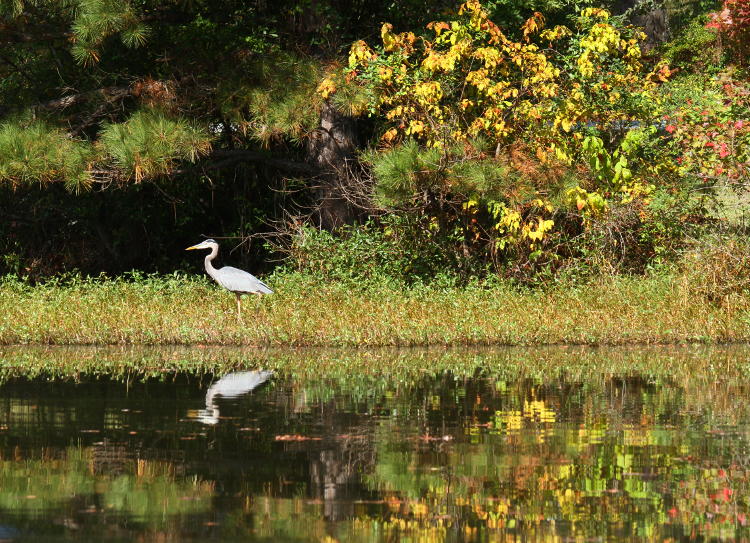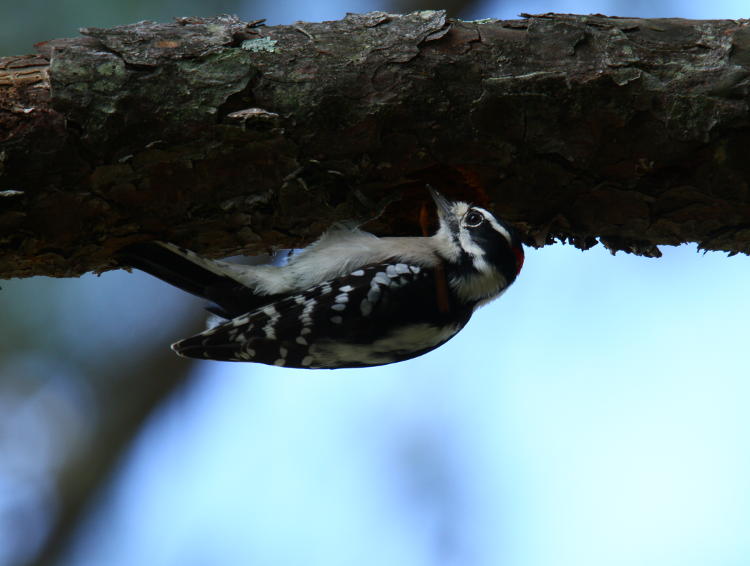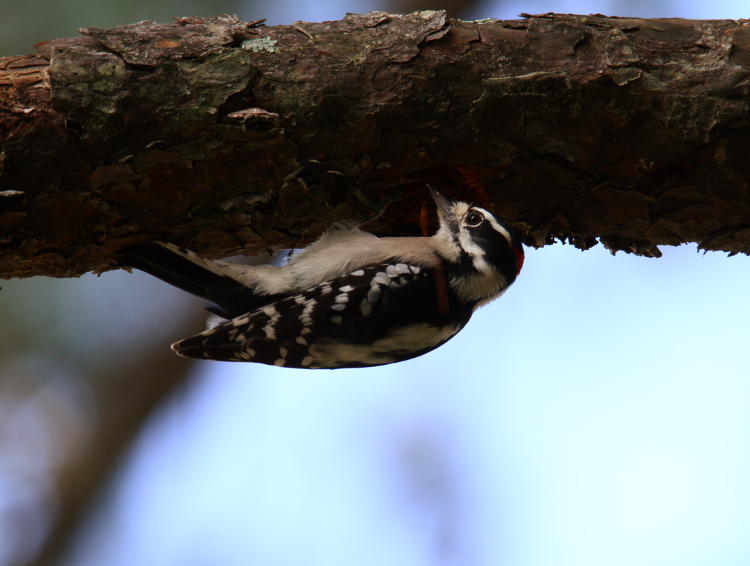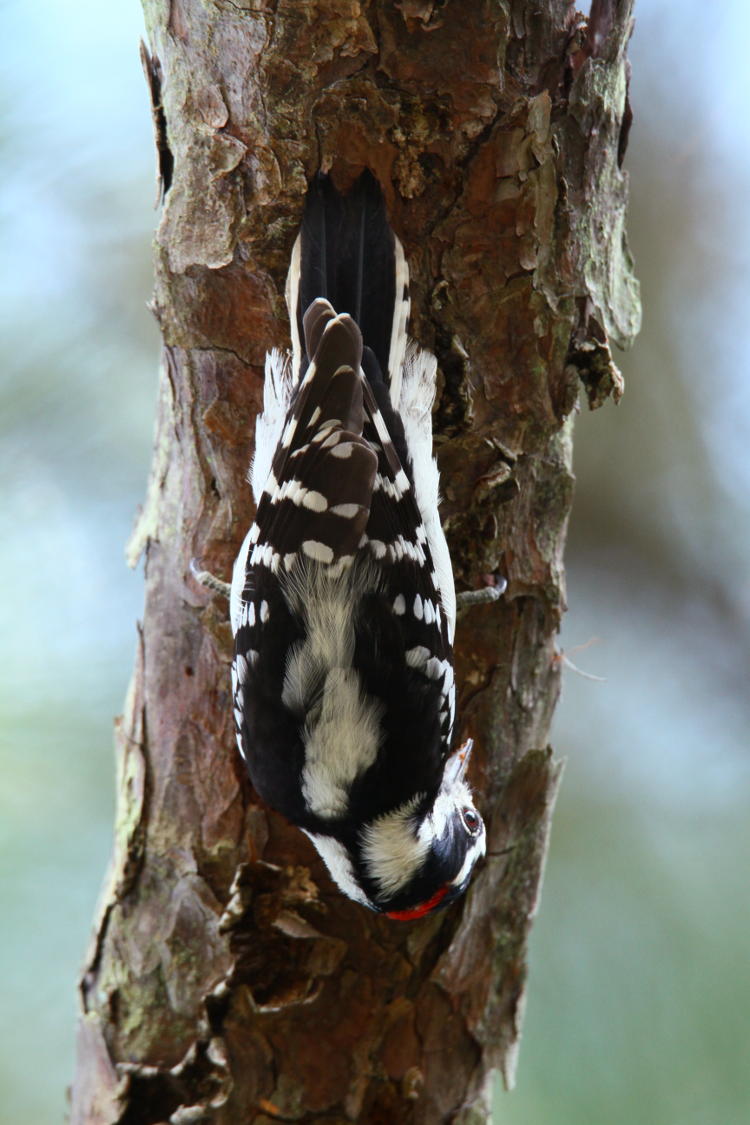
A few days back, I got the chance to do a brief walk around the nearby pond to see what could be found, and the answer was, not much. The great egret that provided so many close opportunities was nowhere to be seen, quite likely having moved on now. Instead, I was seeing a great blue heron (Ardea herodias) that’s been around for a few weeks now. The heron was the polar opposite of the egret: it wouldn’t let me get within a dozen meters, which is pretty timid for the species, so everything that I shot was from a distance, allowing only for semi-fartistic frames.
In fact, while attempting to stalk it, I completely forgot about the downy woodpecker (Dryobates pubescens) and its potential nest hollow in one location, remembering it long after passing and chiding myself for it. I was toying with the idea of turning back but decided against it – and as it turns out, didn’t need to. A few minutes later, the same sounds of industrious excavation came to me, and another downy (if not the same one) could be seen digging away on a lower branch directly over my path. Okay then.

I was in shadow and the woodpecker was being as hyperactive as normal, so image blur was a serious issue, and I trashed a lot of frames trying for something sharp, but managed a couple. And at some point, I’m going to have to go back and attempt video to try and see something. Many of the tree-clinging birds like woodpeckers and nuthatches can scoot along easily on the vertical trunks and undersides of limbs, as seen here, and move around with what appears to be little hops that seem perfectly natural. Except… gravity doesn’t work that way, and any bird that ‘hops’ while hanging upside-down isn’t exactly going to come back to the branch. So I’m curious to see what exactly they are doing. I first started wondering about this decades ago while still in NY, when I watched a nuthatch sitting sideways on the post that held our bird feeder, and abruptly it reversed the direction that it was facing – again, with just a little hop, except it couldn’t have been. I’m finally at a point now where I can shoot video of such a maneuver, up close, and slow it down enough to see what’s actually happening – provided, of course, that the light is sufficient for a decent frame rate and I get another bird to cooperate. We’ll see what happens.
Meanwhile, I decided to take the above frame, tinted blue by the shadows (and a white balance set for sunlight,) and tweak it more towards a neutral color register.

Just so you know, this is a small reduction in the blue channel, and an even smaller increase in the red – just enough to compensate for the color cast. Or at least, to my eye. Most editing programs contain some function to try and do this, but they’re easily fooled by what appears in the image, such as the blue sky or too much green foliage, so I almost always get better results doing it by hand. It usually takes a little practice in recognizing what true neutral is, and I won’t say I have it perfect here, but it’s close enough for free content ;-)
And one more.

The downy was fairly engrossed in its work, so I could slowly slip in directly underneath it, in a position to get pelted with the wood pulp it was discarding; I was hoping to catch some of this in the photo as it fell, but no frames show it distinctly (or at least, none that showed the woodpecker sharply as well.) The woodpecker was merely facing the opposite of those frames above, but I was aimed straight up now. I like how the widely spread toes even peek out from the sides of the body.
That’s all for now, but I’m keeping on schedule for the end of the month – only six more posts to go, and two of them are part of my routine schedule, plus I have an outing tomorrow. Piece of cake.




















































